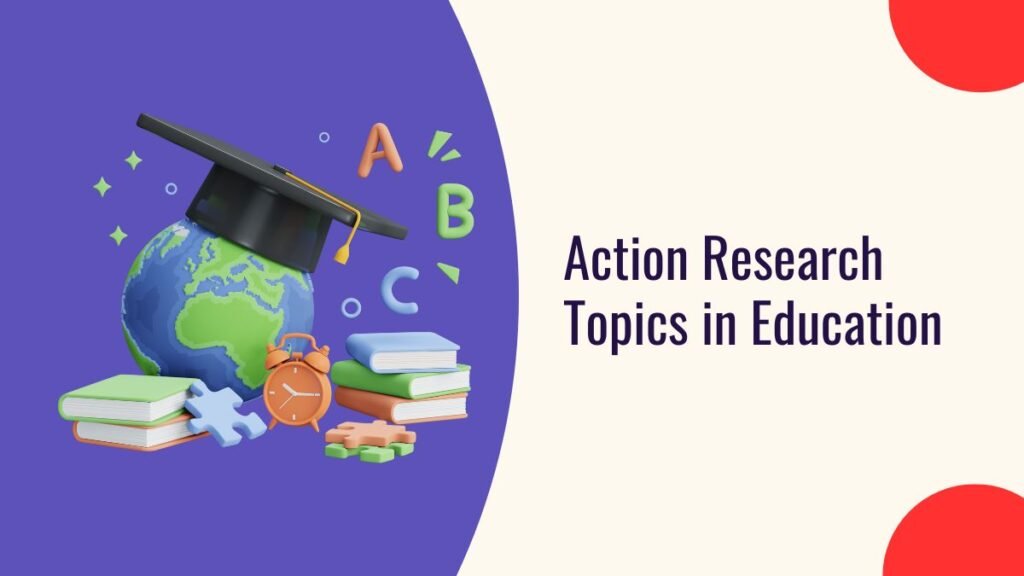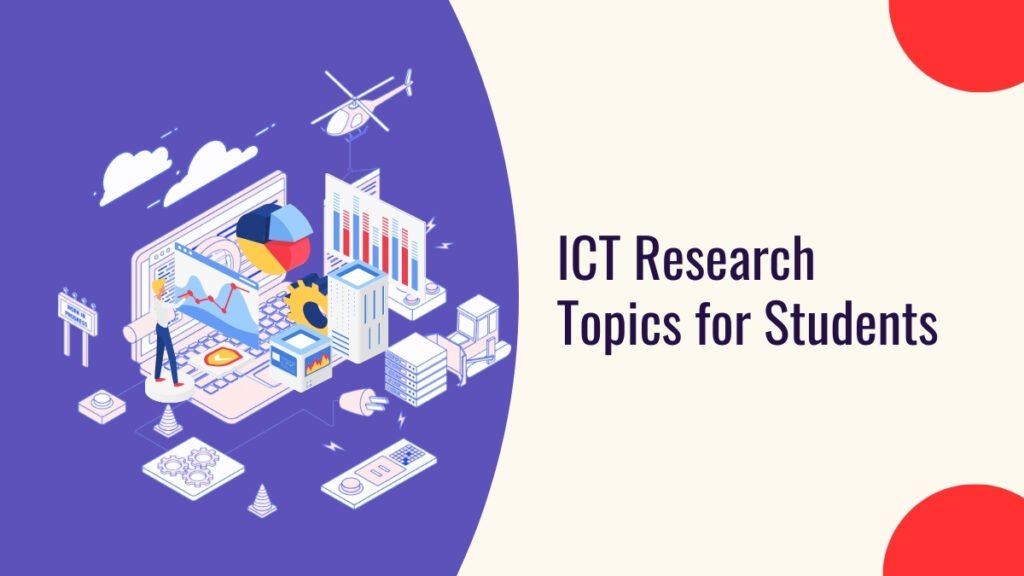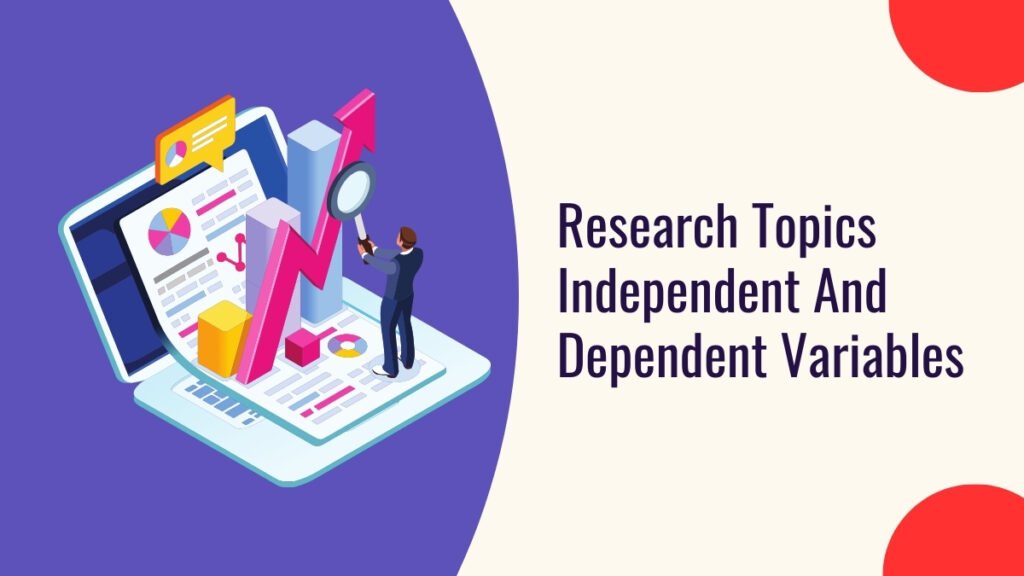Discover easy-to-understand action research topics in education that focus on making positive changes. Explore ideas in education, health, community development, and more to help you create a real impact.
Ever wondered how teachers can make learning even better? Action research in education helps teachers test new ideas to see what works best for their students. They might explore ways to keep students more interested in class, use technology to make learning fun, or create a classroom that feels safe and welcoming for everyone.
By picking a topic that matters to their students—like improving reading skills, reducing stress, or boosting teamwork—teachers can try small changes, see the results, and make things better. In this post, we’ll look at action research topics that teachers can use to improve learning for everyone.
Action Research Topics in Education PDF
What Is Action Research?
Action research is a cyclical process that involves identifying a problem, developing an action plan, implementing the plan, observing the results, and reflecting on the outcomes. Key concepts include:
- Collaboration: Involves teachers, students, and stakeholders in the research process.
- Reflection: Encourages educators to reflect on their practices and make informed decisions.
- Iteration: The process is cyclical, allowing for ongoing improvement.
Difference Between Action Research and Traditional Research
| Aspect | Action Research | Traditional Research |
| Purpose | Improve practice | Generate new knowledge |
| Focus | Specific, localized issues | Broad, generalizable findings |
| Researcher’s Role | Active participant | Objective observer |
| Methodology | Flexible and adaptive | Rigid and predetermined |
Importance of Action Research in Education
Action research plays a vital role in education by:
- Promoting Professional Development: Educators learn from their experiences.
- Enhancing Student Learning: Focuses on improving student outcomes.
- Fostering Innovation: Encourages new teaching strategies and solutions.
Benefits for B.Ed Students
- Practical Application: Bridges theory with real classroom experiences.
- Skill Development: Enhances critical thinking, problem-solving, and research skills.
- Collaboration: Fosters teamwork and communication with peers.
How to Choose an Action Research Topic?
Selecting the right topic is crucial for effective action research. Consider the following:
Tips for Selecting Relevant Topics
- Identify Issues: Reflect on challenges faced in the classroom.
- Engage with Peers: Discuss ideas with colleagues to gain insights.
- Consult Literature: Explore existing research for inspiration.
Aligning Topics with Educational Goals
Ensure that your chosen topic aligns with:
- Curriculum standards
- School improvement plans
- Personal teaching objectives
Action Research Topics in Education
Here are some of the best action research topics in education
Classroom Management
- Reducing noise in the classroom.
- Using stickers as rewards for good behavior.
- Best ways to arrange desks for group work.
- Importance of having a daily schedule.
- How body language affects classroom control.
- Managing a big class with lots of students.
- Building trust with students.
- Using circle time to solve conflicts.
- Tips for keeping lessons on track.
- Making every student feel included.
Curriculum Development
- Adding fun technology to lessons.
- Learning through projects in science.
- Trying new reading programs for kids.
- Combining subjects for better learning.
- Making lessons relevant to all cultures.
- Teaching students to think critically.
- Using hands-on projects in high school.
- Learning through real-world experiences.
- Following lesson plans closely.
- Including social skills in the curriculum.
Assessment and Evaluation
- How quick tests help students learn.
- Benefits of students reviewing each other’s work.
- The effects of standardized testing.
- Giving regular feedback to boost motivation.
- Using data to improve teaching methods.
- Trying new ways to assess young learners.
- Teaching students to evaluate their own work.
- Comparing traditional tests to hands-on tasks.
- Using online portfolios to show progress.
- Assessing important life skills in students.
Diversity and Inclusion
- Helping non-native speakers in class.
- Making lessons welcoming for everyone.
- Teaching students with special needs.
- Checking how effective anti-bullying programs are.
- Including different cultures in lessons.
- Adjusting lessons for different learning styles.
- Promoting equal opportunities for all students.
- Creating a supportive classroom environment.
- Tackling challenges in diverse classrooms.
- Building understanding among different students.
Teaching Strategies
- Using group work to help students learn.
- Changing lessons to meet different needs.
- Making learning fun through games.
- Encouraging questions for better understanding.
- Flipping lessons for student-led learning.
- Storytelling to teach difficult concepts.
- Hands-on experiments in science classes.
- Using pictures and diagrams to explain.
- Helping students think about their thinking.
- Benefits of visual tools in teaching.
Parent and Community Involvement
- How parents’ help can improve grades.
- Building strong relationships with families.
- Partnering with community groups for support.
- Hosting parent workshops to aid learning.
- Encouraging parent volunteering in schools.
- Communicating clearly with parents.
- Family background and its effect on learning.
- Evaluating school events that involve families.
- Getting local businesses to support schools.
- Using social media to connect with families.
Technology in Education
- Online learning tools and student performance.
- Using apps to help with reading.
- Social media for group projects.
- Virtual reality for real-life experiences.
- Teaching coding to all students.
- Digital literacy programs for kids.
- Flipping lessons with video tutorials.
- Online discussions to engage students.
- Using platforms to track student progress.
- Teaching safe online practices.
Teacher Professional Development
- How mentors help new teachers succeed.
- The effects of training on teaching style.
- Encouraging teachers to grow in their roles.
- Learning together in teacher groups.
- Watching peers teach to improve skills.
- Training teachers on understanding diverse cultures.
- Building teacher confidence for better teaching.
- Reflecting on teaching for personal growth.
- Finding online resources for teacher learning.
- Coaching to improve classroom practices.
Student Well-being
- Mindfulness to help reduce stress.
- Linking exercise to better focus in class.
- Raising awareness about mental health.
- Evaluating school counseling services.
- Teaching skills for emotional learning.
- Helping students build resilience.
- Healthy eating and its effects on learning.
- Support groups for student mental health.
- Using art to improve emotional health.
- School rules and their impact on mental well-being.
STEM Education
- Fun experiments to learn science.
- Encouraging girls to join STEM fields.
- Using robots to teach problem-solving.
- Project-based learning in STEM subjects.
- Coding clubs for hands-on experience.
- Teaching engineering in early grades.
- Fun math games to improve skills.
- Field trips to inspire interest in STEM.
- Learning teamwork through STEM projects.
- Creating a science fair to showcase work.
Literacy and Language Development
- Helping struggling readers with special lessons.
- Building a strong vocabulary in kids.
- Evaluating bilingual education success.
- Reading together to improve skills.
- Using phonics for reading success.
- Technology tools for learning to read.
- Writing classes to boost student writing.
- Storytelling for language practice.
- School libraries to encourage reading.
- Supporting literacy for English learners.
Behavioral Interventions
- How behavior plans help improve students.
- Teaching social skills for better behavior.
- Restorative practices to resolve conflicts.
- Teaching kids how to solve problems.
- Peer mediation to manage conflicts.
- Positive behavior systems in schools.
- Tackling bullying with clear strategies.
- How classroom setup affects behavior.
- Using contracts to encourage good behavior.
- Giving rewards for positive actions.
Gifted and Talented Education
- Adapting lessons for gifted students.
- Evaluating programs for talented kids.
- Mentoring to support gifted learners.
- Encouraging creativity in gifted education.
- Addressing emotional needs of gifted students.
- Acceleration programs for advanced learning.
- Project-based learning for gifted students.
- Finding gifted students from diverse backgrounds.
- Clubs and activities for talented kids.
- Using tech tools to support gifted learning.
Environmental Education
- Learning outdoors to engage students.
- Teaching sustainability in science classes.
- School gardens for health and learning.
- Encouraging environmental responsibility.
- Field trips to nature for hands-on learning.
- Recycling programs and their impact.
- Teaching climate change awareness.
- Partnering with the community for projects.
- Connecting environmental topics to lessons.
- Nature-based activities for student learning.
Higher Education
- Programs for first-year students to stay in school.
- Engaging students in online college classes.
- Academic advising and student success.
- Internships to prepare for careers.
- Mentoring programs for college students.
- Promoting diversity on campus.
- Research opportunities for student learning.
- Community service projects in college.
- Building friendships in higher education.
- Teaching money management to students.
Special Education
- Strategies for teaching students with learning challenges.
- Checking how effective Individualized Education Plans (IEPs) are.
- Supporting emotional needs of special education students.
- Including special needs students in general classes.
- Technology to help students with disabilities.
- Planning for students with special needs.
- Training teachers on special education methods.
- Working with parents of special needs kids.
- Tracking progress in special education.
- Creating a supportive space for all learners.
Physical Education and Health
- The effect of exercise on school performance.
- Teaching healthy habits in classes.
- Sports and teamwork skills development.
- Evaluating health education programs in schools.
- Getting students more active in PE.
- Benefits of regular recess for students.
- Inclusive PE programs for everyone.
- Nutrition lessons to support healthy choices.
- Physical activity’s impact on mental health.
- Teaching lifelong fitness habits.
Arts Education
- The role of art in boosting creativity.
- Evaluating music education’s effect on learning.
- Mixing art with other subjects.
- Building confidence through drama classes.
- Using art for emotional expression.
- The benefits of art therapy for students.
- Involving students in community art projects.
- Teaching students to appreciate art.
- The value of dance for expression and coordination.
- Integrating arts into education for better learning.
Social Studies Education
- Project-based learning in history classes.
- Teaching students to think critically about social issues.
- Simulating real-world scenarios for civic education.
- Community service projects to teach social responsibility.
- Including diverse perspectives in history lessons.
- Discussing current events in social studies.
- Making history relatable for students.
- Evaluating global education programs in schools.
- Field trips to historical sites for learning.
- Using technology to enhance social studies lessons.
Global Education
- Teaching students about being global citizens.
- The impact of cultural exchange programs.
- Exploring world issues through projects.
- Adding global perspectives to lessons.
- Preparing students for a global job market.
- Learning languages to connect with others.
- Building empathy for global challenges.
- Encouraging student activism for change.
- Collaborating with schools from other countries.
- Learning about global cultures through festivals.
How to Choose Action Research Topics?
Here are the tips to choose action research topics:
- Identify Interests: Consider topics you are passionate about in education.
- Relevance: Ensure the topic is relevant to current educational practices or challenges.
- Feasibility: Assess if you can gather data and resources within your timeframe.
- Literature Review: Explore existing research to find gaps you can address.
- Consultation: Discuss ideas with mentors or peers for feedback.
10 Examples of Research Titles for Students
- “The Effectiveness of Digital Tools in Enhancing Student Learning”
- “Exploring the Role of Teacher Feedback in Student Performance”
- “Impact of Classroom Layout on Student Interaction and Learning”
- “Assessing the Influence of Group Projects on Student Collaboration”
- “The Role of Mindfulness Practices in Reducing Classroom Stress”
- “Using Gamification to Improve Student Engagement in Math”
- “Parental Attitudes Toward Homework: A Study of Impact on Student Performance”
- “Integrating Culturally Relevant Pedagogy in the Classroom”
- “The Influence of Teacher Training on Student Achievement”
- “Evaluating the Success of After-School Programs on Academic Performance”
Steps to Conducting Action Research
Here are the steps to conducting action research:
Planning Your Research
- Identify the Problem: Clearly define the issue you want to address.
- Review Literature: Conduct a literature review to inform your approach.
- Develop an Action Plan: Create a detailed plan outlining your interventions.
Implementing the Action Plan
- Put Your Plan into Action: Implement your strategies while documenting the process.
- Collect Data: Use various methods (surveys, observations, tests) to gather evidence.
Evaluating and Reflecting on Results
- Analyze Data: Examine the results to assess the impact of your interventions.
- Reflect on Findings: Consider what worked, what didn’t, and why.
- Revise the Action Plan: Make adjustments for future iterations based on your reflections.
Challenges in Action Research and How to Overcome Them
Here are the challenges in action research and tips to overcome them:
Limited Time
- Challenge: It takes a lot of time, which can be hard to manage.
- Solution: Plan ahead and set clear timelines. Focus on what’s most important.
Resistance to Change
- Challenge: People might not want to try new ideas.
- Solution: Involve everyone early and explain the benefits of the changes.
Data Collection Issues
- Challenge: It can be hard to collect accurate data.
- Solution: Use simple and clear methods for gathering data. Test your methods first to fix any problems.
Limited Resources
- Challenge: You might not have enough money or materials.
- Solution: Use what you have creatively. Look for partnerships or grants to help.
Balancing Workload
- Challenge: It’s tough to balance research with other duties.
- Solution: Combine research with your daily tasks. Pick topics that fit into your work.
Lack of Support from Colleagues
- Challenge: Some colleagues may not understand or support your research.
- Solution: Share your goals and findings with them. Talk about how action research can help everyone.
Limited Research Experience
- Challenge: Some teachers might feel unsure about doing research.
- Solution: Offer training or workshops. Work with someone who has experience.
Uncertain Results
- Challenge: You might not get the results you expect.
- Solution: Focus on what you learn, not just the results. Be ready to change your approach based on what you find.
Ethical Concerns
- Challenge: Keeping everything ethical can be tricky.
- Solution: Follow ethical guidelines and get consent from participants. Be open about your process.
Sustaining Changes
- Challenge: It’s easy to make changes, but hard to keep them.
- Solution: Make a plan for ongoing support. Involve the community to help keep improvements going.
By tackling these challenges with simple solutions, action research can greatly improve education.
Resources for Action Research Topics in Education
Here are some of the best resources for action research topics in education:
Books
- “Action Research: A Guide for the Teacher Researcher”
- “The Action Research Planner”
- “Research Methods in Education”
Websites
- Action Research Network of the Americas (ARNA): Articles and support.
- Educational Action Research Journal: Research articles.
- Teachers College Record: Education research articles.
Online Courses
- Coursera: Courses on action research.
- edX: Educational research courses.
Journals
- Action Research: Articles on action research.
- Educational Researcher: Studies about education.
Professional Groups
- AERA: Resources for educators.
- NCTE: Help for language arts teachers.
Webinars and Workshops
- Look for online events about action research.
Community Forums
- Edutopia: Ideas and experiences from teachers.
- Teachers Pay Teachers: Resources from other teachers.
University Resources
- Check local universities for guides on action research.
Blogs and Articles
- Educational Blogs: Teachers share their stories.
- ResearchGate: A site for sharing research ideas.
Social Media Groups
- Join Facebook or LinkedIn groups about action research.
These resources can help you find action research topics in education.
Conclusion
Action research is an invaluable process for B.Ed students, allowing them to connect theory with practice and enhance their teaching skills. By undertaking action research, future educators can identify areas for improvement, implement effective strategies, and contribute to a culture of continuous learning in their schools.
As you embark on your action research journey, remember that every small change can lead to significant improvements in student learning and engagement. Embrace the challenges and rewards that come with this reflective practice, and make a lasting impact in the field of education.



